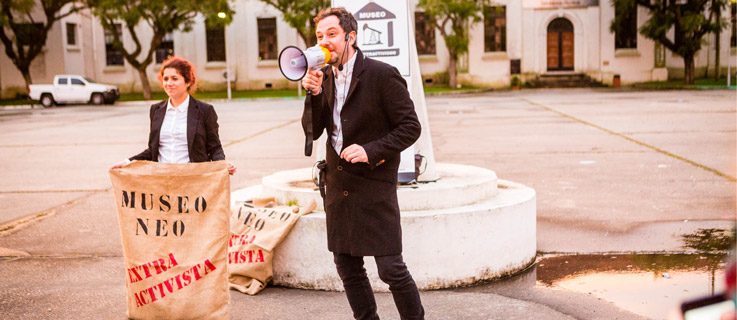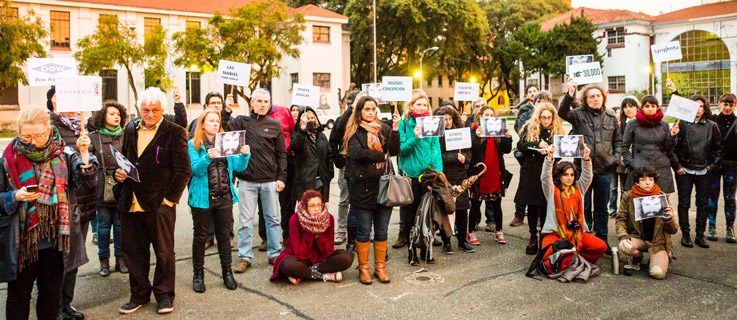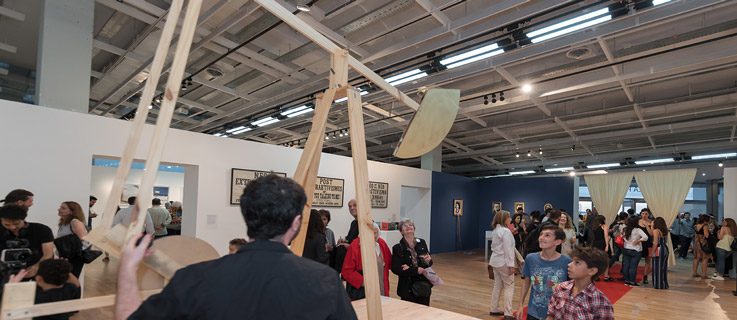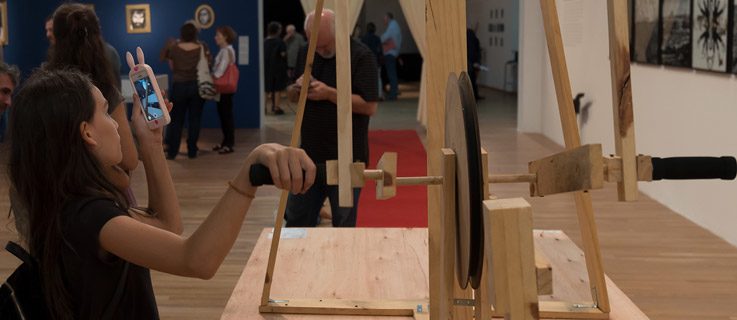The Future of Memory
The Neo Extractivism Museum
The Neo Extractivism Museum is an artistic project that seeks to tell the unofficial history of the new forms of looting and appropriation in South America. Everyone is invited to participate by entering logging on to www.neoextractivismo.org.
The Neo Extractivism Museum (MNE) is a nomadic project that adopts various exhibition formats according to the space, institution, and context in which it moves. The project comes from an investigation carried out by the Etcétera collective concerning the neo-extractivist model and its consequences for the environment, social health, and human rights. The installation in the PAyS halls at Parque de la Memoria is a prototype, i.e., one of the possible rooms of this museum, and it includes installations, site-specific works, photography, video, objects, and maps, among other elements. During the exhibition, the museum will also present some perfomances and interventions in the vicinity of Parque de la Memoria.
What is neo-extractivism?
"Neo-extractivism" is a model of economic development adopted by some South American governments at the beginning of the 21st century. Its history dates back to the so-called conventional extractivism, a mode of accumulation that began more than 500 years ago after the European conquest and colonization of American, African, and Asian territories. It was in this way that the capitalist economic system began to be implemented around the world.
Extractivism has been, and continues to be, a colonial (and neo-colonial) mechanism quintessentially based on looting and appropriation. Neo-extractivism, as well as its predecessor, guides the economy towards activities of extreme exploitation of nature in order to obtain unprocessed primary resources (raw materials), which are then exported to Europe and the Asian and North American industries. Neo-extractive exploitation is not limited to minerals and oil; it also involves activities such as agriculture, fisheries, and even the so-called cognitive extractivism.
Why a museum?
Culture and arts are viewed as a fundamental part in the productive chain of this economic model. Therefore, several of the companies—local or multinational—have visitor centers or museums to narrate their history in a didactic, artistic, or museographic manner. The Neo Extractivism Museum fulfills the reverse function of these centers: to narrate the other side of history through works, objects, and installations, in order to show the reasons and consequences behind this model. This is a platform built to illustrate how the territory has been transformed, who is behind this transformation, and who is resisting it.
The MNE features educational experiments, publications, and a collection of works by local and international artists who have been researching the exploitation perpetrated by mega mining, deforestation, and the use of pesticides and toxic agrochemicals, among other activities. MNE interventions invite the public to learn and provide their knowledge about the extractivist model and its consequences through play-in spaces created to imagine different development models based on the defense of human rights and nature.
The museum is divided into four conceptual axes: Historic Extractivism, Neo Extractivism, Resistance, and Social Imagination. These four concepts are developed in the four areas that structure the Neo Extractivism Museum: collection, education, museography, and publications. The MNE is designed as a nomadic device that allows for movement and adaptation to different contexts, whether in exhibition spaces as such (cultural centers, museums, art spaces), or on sites where communities are affected (mining, rural, or agricultural areas). In each show, the MNE displays part of its collection (under permanent construction) in different formats depending on the area chosen or designated.
The museum features works and projects from artists and collective groups from different countries. The collection includes pieces created specially for each show, together with works on loan and donations. The MNE produces and distributes a series of publications specifically thought and designed for each context. In addition, it carries out a series of participatory activities (focusing on children and teenagers) through games and performances that critically analyze the "recreational and educational" activities designed by the extractive companies themselves.





